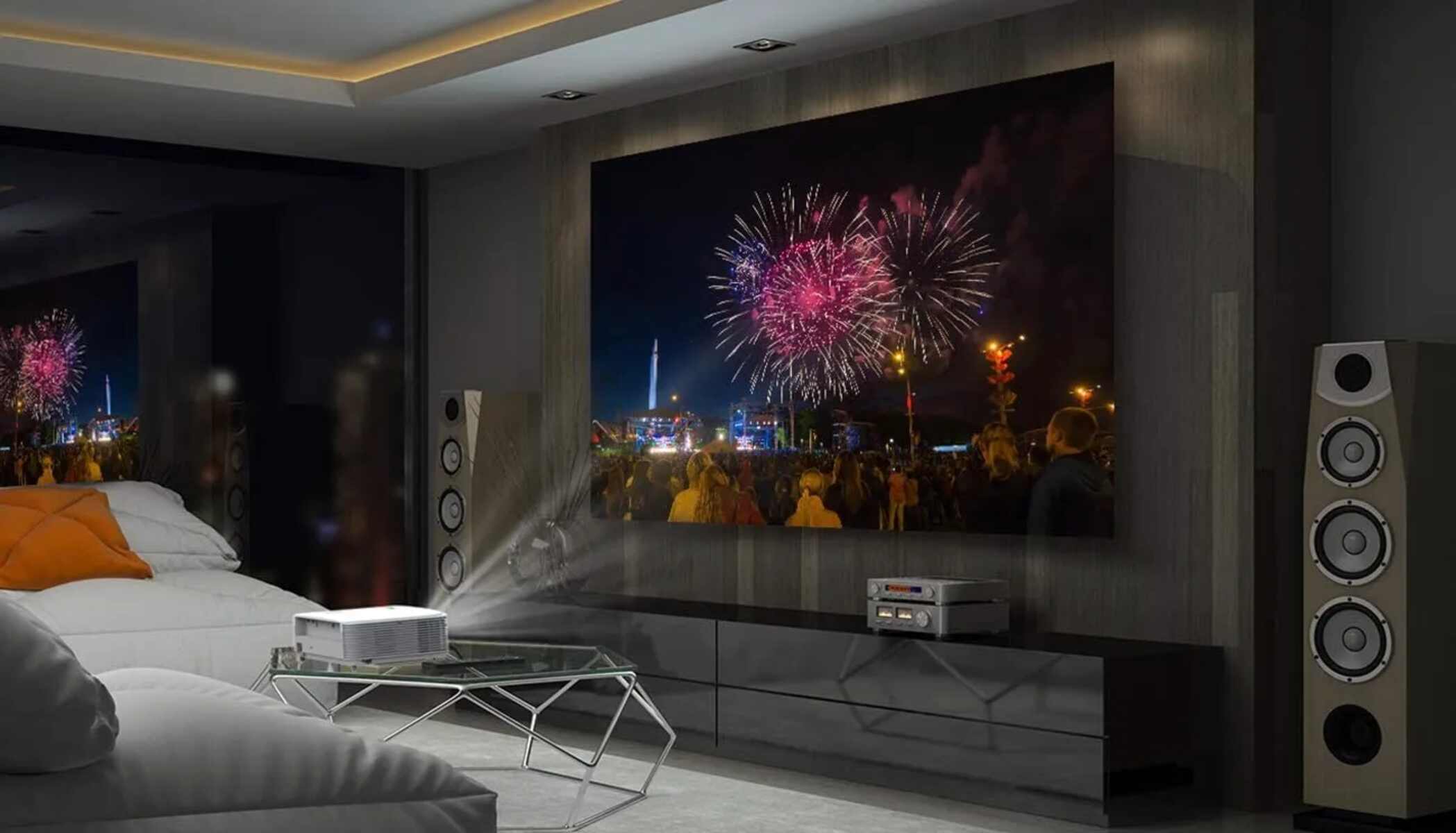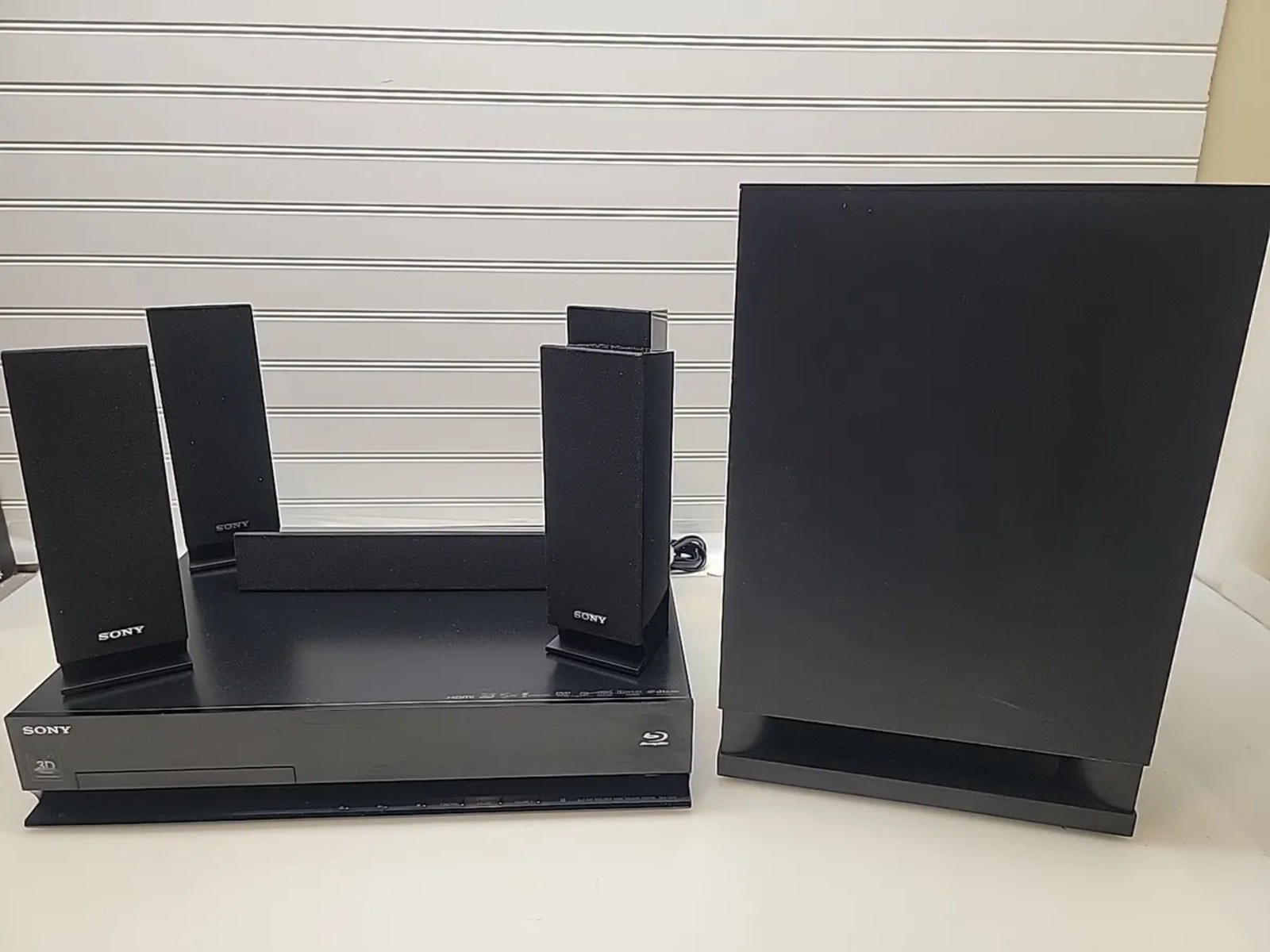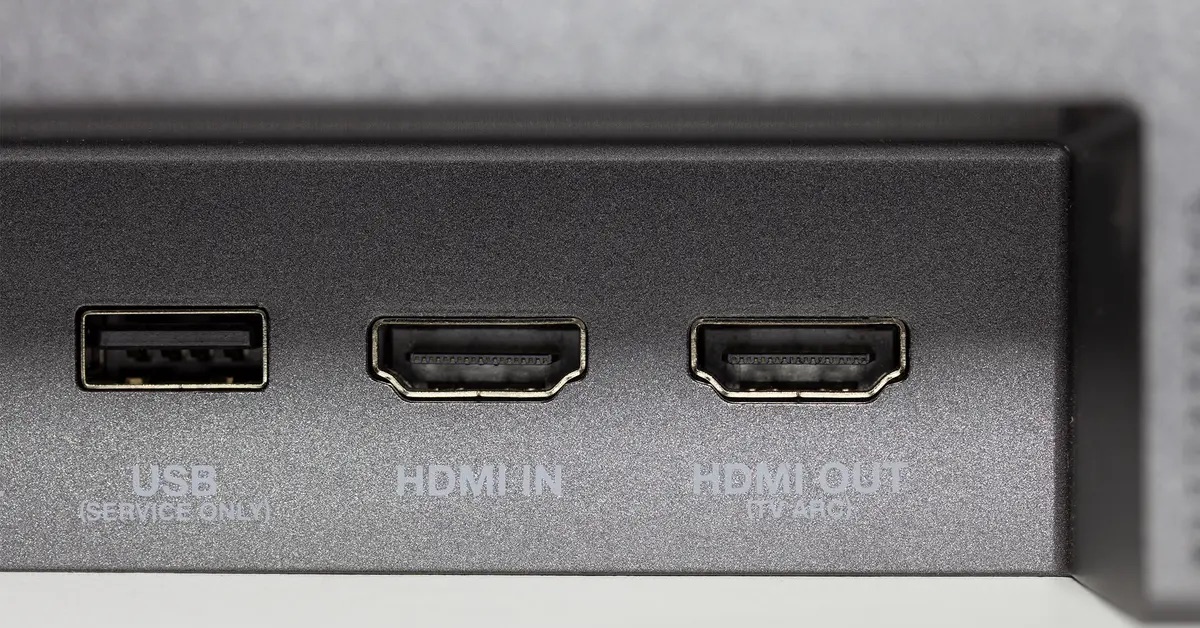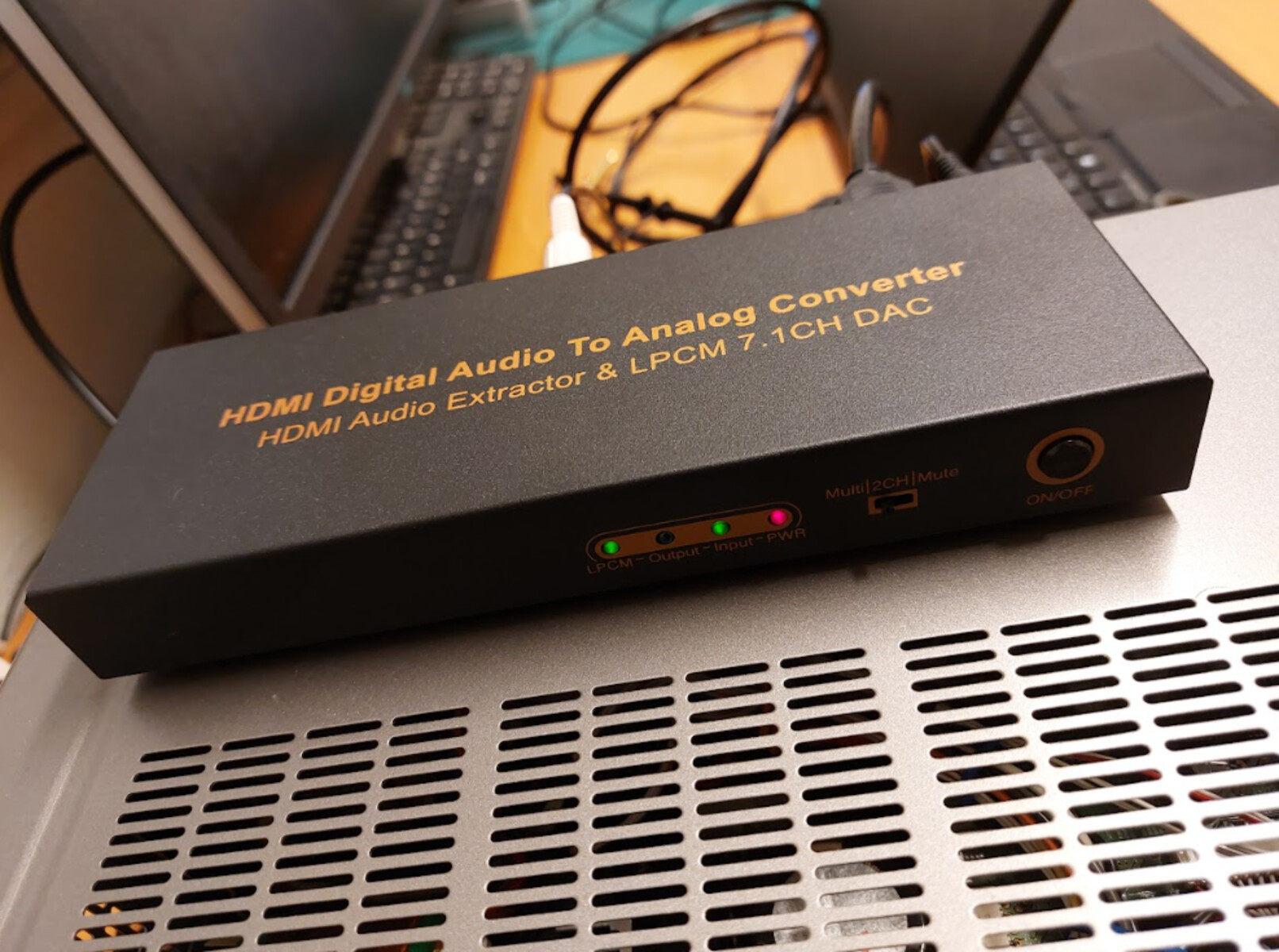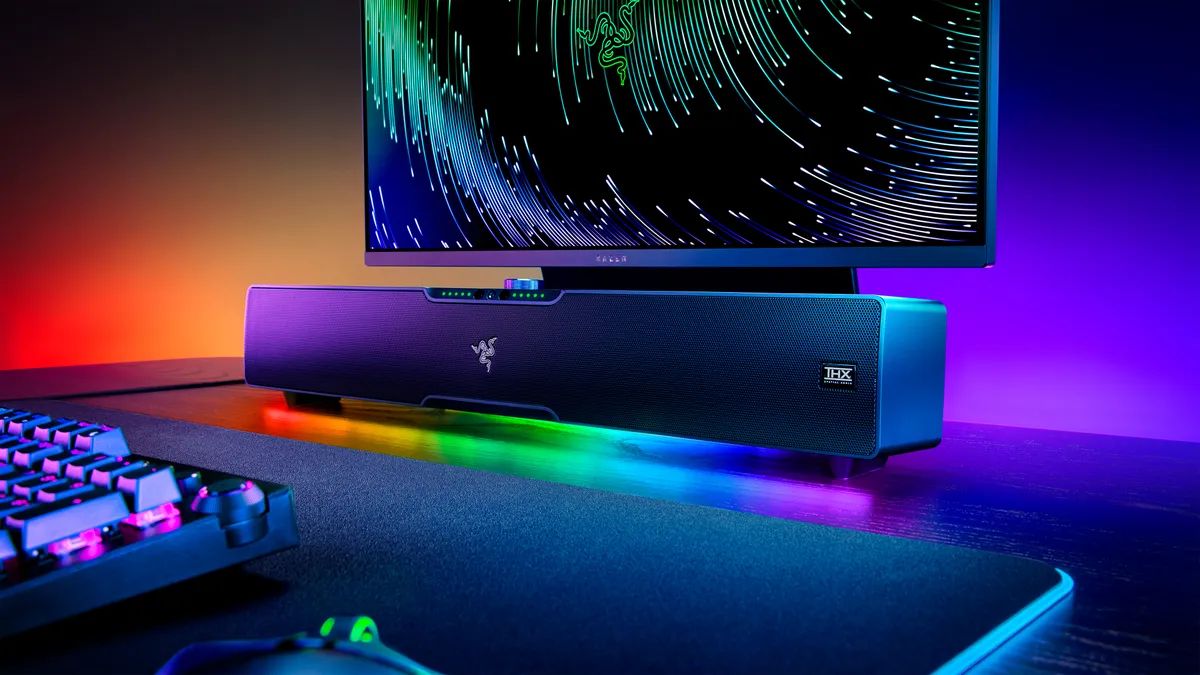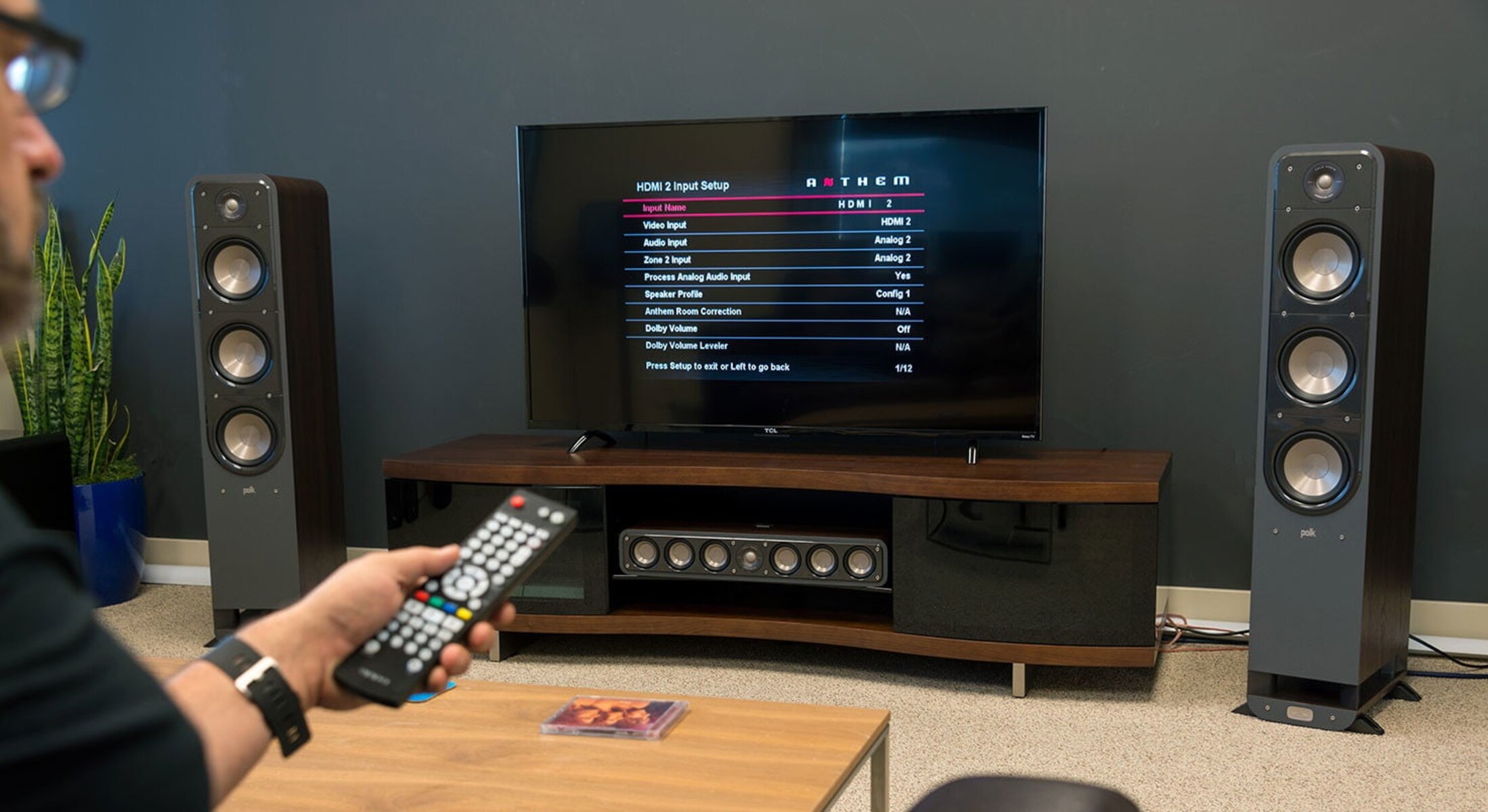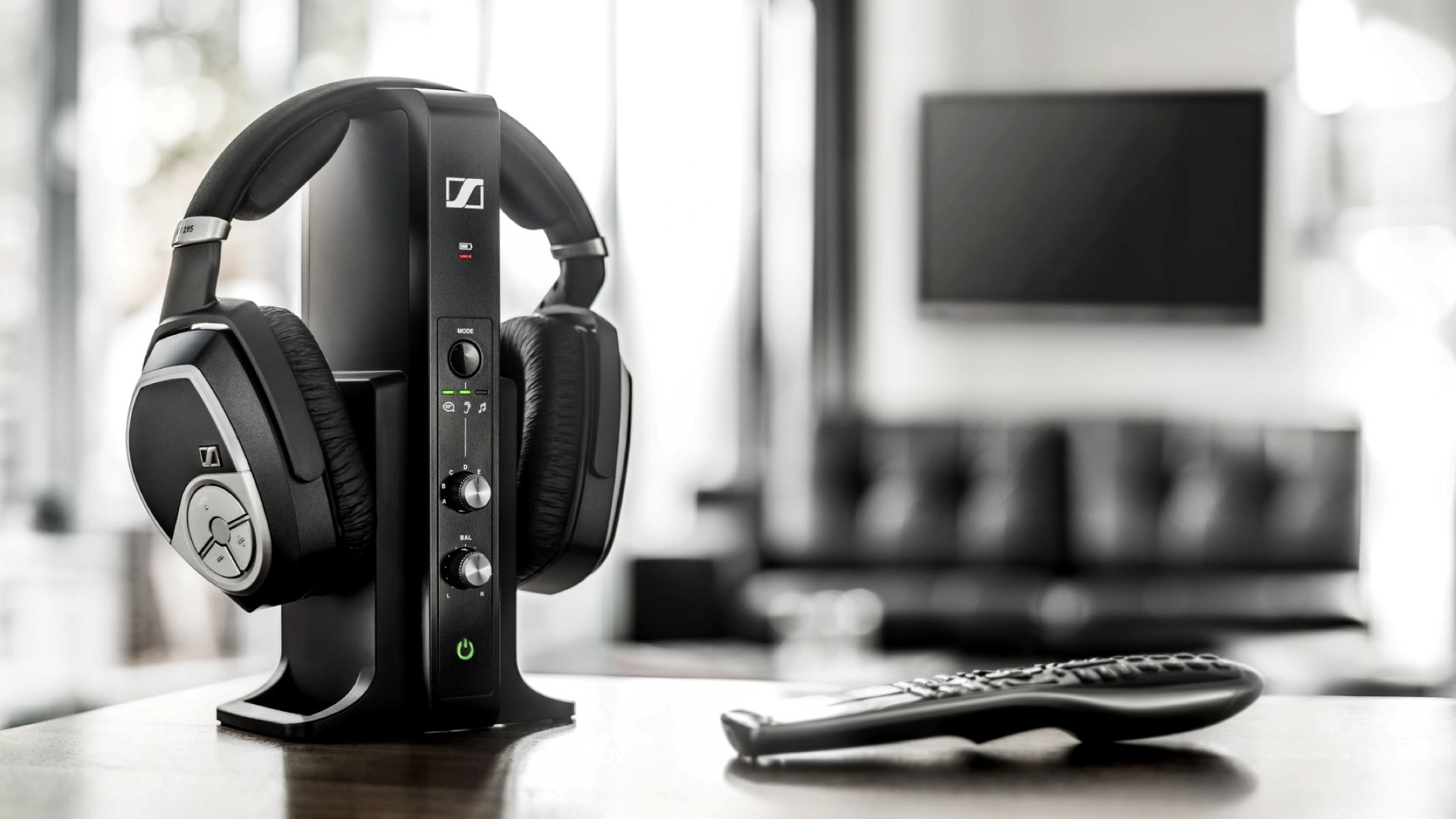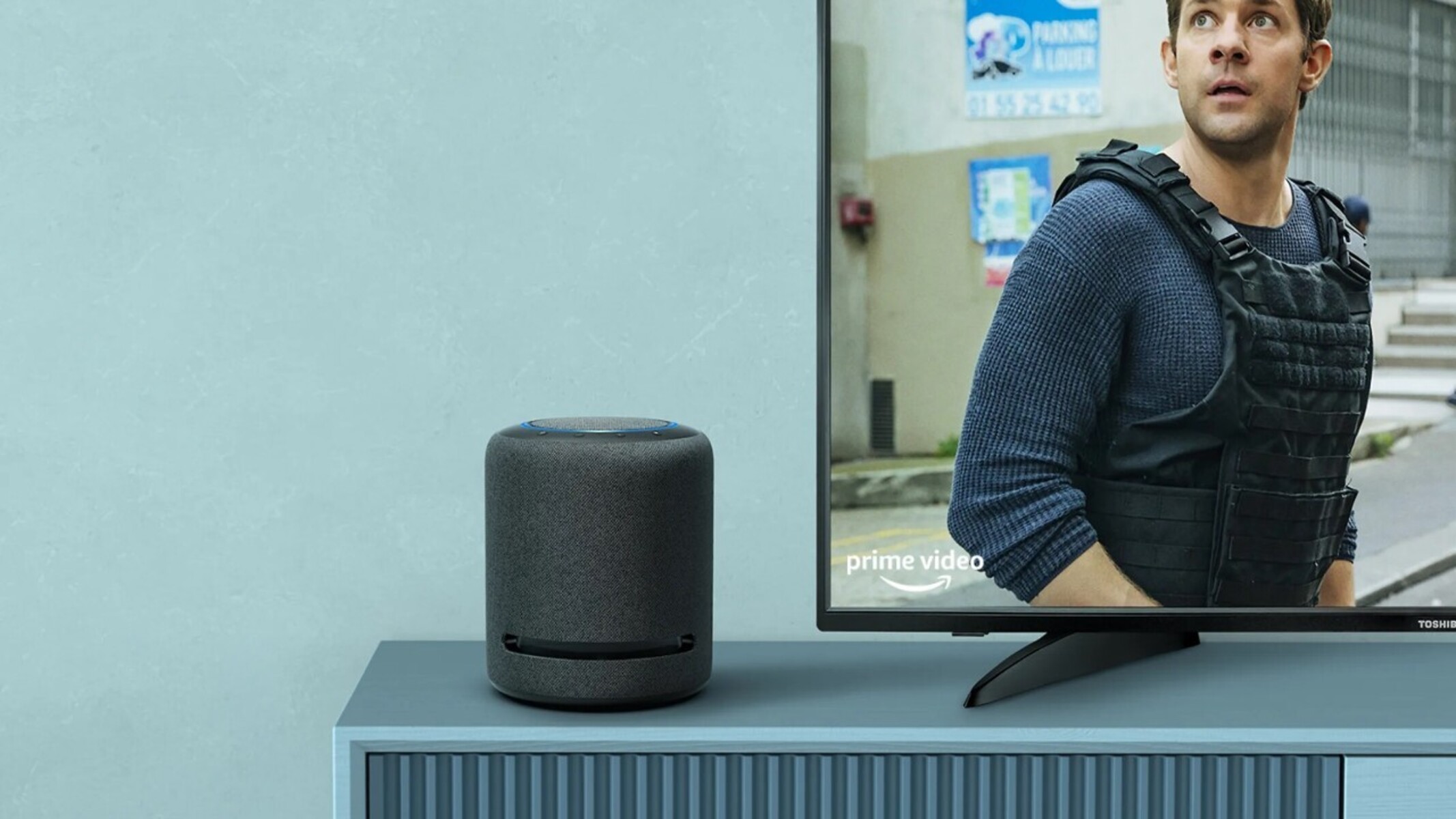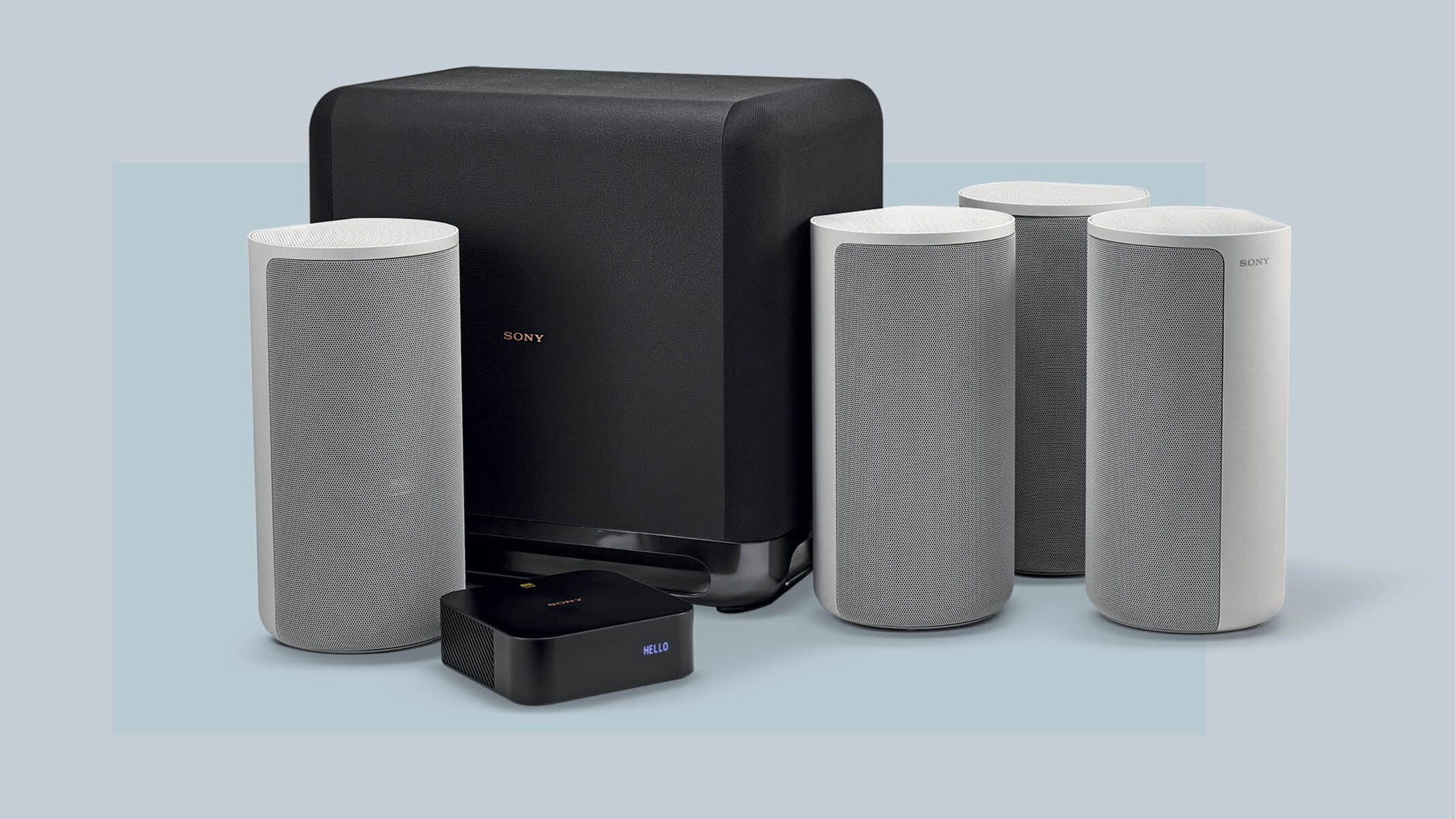Introduction
Welcome to the world of surround sound systems, where audio comes alive and immerses you in a truly cinematic experience. If you’re a fan of movies, music, or gaming, you’ve probably invested in a surround sound system to take your entertainment to the next level. However, you may have noticed that sometimes there’s a slight delay in the audio playback, which can be frustrating and disrupt your enjoyment. This delay is a common issue faced by many surround sound system owners, but understanding its causes and finding solutions can help you overcome this hurdle.
Before we delve into the reasons behind the delay, let’s first understand what a surround sound system is. Unlike traditional stereo systems that have only two speakers, surround sound systems consist of multiple speakers strategically placed around the room to create a three-dimensional audio experience. These systems are designed to mimic the way sound is heard in real life, providing a more immersive and realistic auditory experience.
Now, let’s address the question: why does a surround sound system delay? The delay occurs when there is a noticeable lag between the video on your screen and the corresponding audio that reaches your ears. This mismatch can result in an unsynchronized viewing experience and detract from the overall enjoyment of your media.
Several factors contribute to the delay in a surround sound system. Understanding these factors can help you troubleshoot and minimize the delay:
1. Audio processing: Surround sound systems have built-in audio processing capabilities that analyze incoming audio signals and distribute them to the appropriate speakers. This processing can introduce a slight delay as the system decodes and processes the audio before it reaches the speakers.
2. Distance from speakers: The physical distance between you and the speakers can impact the delay you experience. Sound travels at a finite speed, and the further you are from the speakers, the longer it takes for the audio to reach your ears.
3. Connection types: The way you connect your devices to the surround sound system can also contribute to the delay. Different connection types, such as HDMI, optical, or Bluetooth, may have varying signal processing times that can result in audio delay.
4. Wireless systems: If you have a wireless surround sound system, the transmission of audio signals wirelessly can introduce additional latency. The wireless signal needs to be processed and transmitted, which can cause a noticeable delay in the audio playback.
Now that we have explored the various factors contributing to delay, it’s time to troubleshoot and find solutions to minimize the delay in your surround sound system. By making a few adjustments and following some troubleshooting steps, you can enhance your audio experience and eliminate the delay.
Understanding Surround Sound Systems
Surround sound systems are designed to create a rich and immersive audio experience by using multiple speakers positioned strategically around a room. By strategically placing speakers in different locations, these systems envelop the listener in a three-dimensional sound field. This setup allows for a more realistic and captivating audio experience, whether you’re watching a movie, listening to music, or playing video games.
The most common configuration for surround sound systems is the 5.1 setup, which consists of five main speakers and a subwoofer. The five main speakers include a center speaker, two front speakers, and two rear or surround speakers. The subwoofer is responsible for reproducing low-frequency sounds that add depth and impact to the audio.
The center speaker is typically positioned above or below the television screen and is responsible for reproducing dialogue and other central audio elements. The front speakers, commonly referred to as left and right speakers, provide stereo sound and contribute to the overall spatial audio experience. These speakers are usually placed on either side of the screen at ear level.
The rear or surround speakers play a crucial role in creating the surround sound effect. They are positioned behind or on the sides of the listener to deliver ambient sounds, environmental effects, and directional audio cues. These speakers enhance the sense of immersion and make on-screen action feel more realistic by accurately reproducing sounds coming from different locations.
In addition to the 5.1 setup, there are more advanced configurations available, such as 7.1 or even 9.2 systems, which incorporate additional speakers for an even more enveloping audio experience. These setups include additional side or rear speakers, as well as height speakers that add a vertical dimension to the sound.
To further enhance the surround sound experience, modern systems often come with advanced audio technologies like Dolby Atmos and DTS:X. These technologies use object-based audio to create a more precise and immersive soundstage. By placing audio objects in different locations within the room, these systems can accurately reproduce sound movements and create a lifelike audio experience.
Understanding the components and configurations of surround sound systems is crucial for optimizing their performance and troubleshooting any issues that may arise. Whether you’re a casual user or a dedicated home theater enthusiast, having a solid grasp of how these systems work allows you to fully appreciate the benefits of surround sound and make the most of your entertainment setup.
Why Does a Surround Sound System Delay?
When we experience a delay in the audio playback of a surround sound system, it can be frustrating and take away from the immersive experience we expect. Understanding the reasons behind this delay is crucial in troubleshooting and resolving the issue. Several factors contribute to the delay in a surround sound system.
One of the main factors is the process of audio decoding and processing. Surround sound systems have built-in audio processors that analyze and decode incoming audio signals. This processing takes a certain amount of time, resulting in a delay before the audio is sent to the speakers. While the delay is usually minimal, it can become noticeable in certain situations.
Another factor contributing to delay is the distance between the listener and the speakers. Sound travels at a finite speed, and the further you are from the speakers, the longer it takes for the sound to reach your ears. This delay is more pronounced in larger rooms or setups where the listener is positioned farther away from the speakers. Proper speaker placement and seating arrangement can help minimize this delay.
The type of connections used in the setup can also contribute to the delay. Different connection types, such as HDMI, optical, or Bluetooth, have varying signal processing times. HDMI is generally considered to be the best option for audio transmission due to its high bandwidth and ability to carry uncompressed audio signals. However, even with HDMI, there may still be a slight delay introduced by the audio processing in the system.
For those using wireless surround sound systems, additional latency can be introduced due to the wireless transmission of audio signals. The audio needs to be encoded, transmitted, and then decoded by the receiver, which can result in a noticeable delay. While wireless systems provide convenience and flexibility, they often come with a trade-off in terms of latency.
It’s important to note that not all delays in a surround sound system are necessarily due to technical issues. Some media formats, like digital streaming or broadcast signals, may inherently have a built-in delay. This can be the result of various factors, such as encoding and buffering processes, which are outside the control of the surround sound system.
Understanding the factors that contribute to the delay in a surround sound system can help guide troubleshooting efforts. By addressing these factors and implementing solutions, such as optimizing audio settings, adjusting speaker placement, upgrading connection cables, or updating firmware and drivers, you can minimize the delay and enjoy a more synchronized and immersive audio experience.
Factors Contributing to Delay
There are several factors that can contribute to the delay experienced in a surround sound system. Understanding these factors is essential in troubleshooting and finding solutions to minimize the delay and improve the audio experience.
1. Audio Processing: Surround sound systems have built-in audio processors that analyze and decode incoming audio signals. This processing takes time, resulting in a delay before the audio is sent to the speakers. The complexity of the audio processing and the capabilities of the system’s processor can influence the duration of the delay.
2. Distance from Speakers: The physical distance between the listener and the speakers can impact the delay. Sound travels at a finite speed, and the further you are from the speakers, the longer it takes for the sound to reach your ears. This delay becomes more noticeable in larger rooms or setups where the listener is positioned farther away from the speakers.
3. Connection Types: The type of connections used in the surround sound system setup can also contribute to the delay. Different connection types, such as HDMI, optical, or Bluetooth, have varying signal processing times. HDMI is generally considered the best option as it can carry uncompressed audio signals with high bandwidth, minimizing delay. However, even with HDMI, there may still be a slight delay introduced by the audio processing within the system.
4. Wireless Systems: Wireless surround sound systems offer convenience and flexibility, but they often come with additional latency. The audio signals need to be encoded, transmitted, and then decoded by the receiver, which introduces a delay. The latency in wireless systems can vary depending on the technology used and the quality of the wireless connection.
5. Media Format and Source: Some media formats, like digital streaming or broadcast signals, can have inherent built-in delay. This delay is often a result of various factors, such as encoding processes and buffering, which are beyond the control of the surround sound system. Different media sources may introduce varying degrees of delay, and it’s important to consider this when troubleshooting delay issues.
By identifying the factors contributing to the delay, you can take appropriate steps to minimize it and enhance your surround sound experience. Whether it’s optimizing audio settings, adjusting speaker placement, upgrading connection cables, or selecting the most suitable media sources, understanding these factors is key to achieving synchronized and immersive audio playback.
Audio Processing
Audio processing is an integral part of any surround sound system, as it plays a crucial role in decoding and distributing audio signals to the appropriate speakers. However, this process can introduce a slight delay in the audio playback, impacting the synchronization between video and sound. Understanding how audio processing works can help address the delay and optimize the system’s performance.
Surround sound systems decode audio signals using various technologies, such as Dolby Digital or DTS, which are designed to deliver immersive and high-quality audio experiences. When an audio signal is received, it undergoes decoding, where the system identifies the different audio channels and separates them accordingly. This decoding process enables the system to distribute specific sound elements to the appropriate speakers, creating the surround sound effect.
After decoding, the audio signals are processed to enhance the sound quality and create a more immersive experience. This processing can involve various techniques, such as equalization, dynamic range control, and spatial enhancement algorithms. These adjustments are applied to ensure that the audio playback is optimized for the specific room acoustics and speaker configuration.
While audio processing is necessary for achieving high-quality sound, it can introduce a delay in the audio playback. The time it takes for the system to analyze, decode, and process the audio before sending it to the speakers contributes to this latency. The delay is usually minimal, but it may become noticeable in certain situations, such as when there is a visual reference to the sound that appears out of sync.
To mitigate the delay caused by audio processing, manufacturers strive to optimize the system’s internal processing speed. They aim to minimize the time gap between receiving the audio signal and delivering it to the speakers. However, it is important to note that the complexity of the audio processing and the capabilities of the system’s processor can influence the degree of delay experienced.
To address the audio processing delay, it is recommended to ensure that the surround sound system is operating with the latest firmware version. Manufacturers often release firmware updates that include performance enhancements and optimizations. Checking for firmware updates and installing them can help reduce the delay and improve the overall audio synchronization.
It’s worth noting that while audio processing delay is a common issue, in most cases, it is not significantly detrimental to the overall audio experience. However, if the delay becomes noticeable and starts detracting from your viewing or listening pleasure, exploring other factors contributing to delay, such as speaker placement or connection types, may be necessary.
By understanding the role of audio processing in surround sound systems and taking appropriate steps to optimize its performance, you can minimize the delay and enjoy a more synchronized and immersive audio experience.
Distance from Speakers
The distance between you and the speakers in a surround sound system can significantly impact the delay you experience when listening to audio. Sound travels at a finite speed, and the further you are from the speakers, the longer it takes for the sound to reach your ears. Understanding the role of distance in audio delay is crucial for optimizing your surround sound setup.
When audio is produced by a speaker, it travels as a mechanical wave through the air or other medium. This wave propagates at a speed of approximately 343 meters per second (767 miles per hour) in standard atmospheric conditions. The time it takes for the sound to travel from the speaker to your ears depends on the distance involved.
In a surround sound system, speakers are typically placed at different locations around the room to create an immersive experience. The distance between you and each speaker can vary, along with the speaker’s distance from each other. This variation in distances introduces a delay, known as the propagation delay, in the audio playback.
The propagation delay is usually minimal and not noticeable in small or intimate listening spaces. However, in larger rooms or setups where the listener is positioned far away from the speakers, the delay becomes more pronounced. This delay can cause a visual and auditory mismatch when watching movies or playing games, where the sound appears to be slightly behind the on-screen action.
To minimize the delay caused by distance, it is important to consider speaker placement and seating arrangement. The ideal positioning of speakers depends on the specific surround sound system configuration you have, whether it’s a 5.1, 7.1, or other setup. The goal is to position the speakers in such a way that the sound waves travel an equal distance to reach your ears, creating a more synchronized audio experience.
When positioning the speakers, it is recommended to follow the guidelines provided by the surround sound system manufacturer. Placing the center speaker above or below the television screen and positioning the front speakers at ear level on either side of the screen can help ensure optimal sound localization. Rear or surround speakers should be positioned behind or on the sides of the listening area to deliver ambient sounds and enhance the surround sound effect.
Seating arrangement also plays a role in reducing the delay caused by distance. Positioning yourself at the center of the listening area can help create a balanced and more synchronized audio experience. Sitting too close or too far away from the speakers can lead to imbalances in the sound and exacerbate the delay.
By optimizing speaker placement and seating arrangement, you can minimize the delay caused by distance and achieve a more immersive surround sound experience. It’s important to experiment with different configurations and consider the specific acoustics of your room to find the optimal setup that delivers the most synchronized audio playback.
Connection Types
The type of connections used in a surround sound system can have an impact on the delay experienced during audio playback. Different connection types, such as HDMI, optical, or Bluetooth, have varying signal processing times, which can contribute to audio delay. Understanding the characteristics of each connection type can help optimize your system and minimize delay.
HDMI (High-Definition Multimedia Interface): HDMI is widely considered to be the best option for transmitting both audio and video signals. It offers high bandwidth and is capable of carrying uncompressed audio, which ensures high-quality sound reproduction. HDMI also supports advanced audio formats, such as Dolby TrueHD and DTS-HD Master Audio. However, even with HDMI, there can still be a slight delay introduced by the system’s audio processing. This delay is typically minimal, but it may become noticeable in certain situations.
Optical (Toslink): Optical connections use fiber optic cables to transmit audio signals as light pulses. They are capable of carrying digital audio, including formats like Dolby Digital and DTS. Optical connections have lower bandwidth compared to HDMI, but they are still capable of delivering high-quality audio. The processing time for optical connections is generally shorter than that of HDMI, resulting in reduced delay. However, it’s important to ensure that the source device and the surround sound system are set to the same audio format to avoid potential synchronization issues.
Bluetooth: Bluetooth technology is commonly used for wireless audio streaming. While it offers convenience and flexibility, using Bluetooth for surround sound systems can introduce additional latency. The audio signal needs to be encoded, transmitted wirelessly, and then decoded by the receiver, which can result in noticeable delays. The latency can vary depending on the specific Bluetooth version and the quality of the wireless connection. If minimal delay is a priority, it’s advisable to use a wired connection instead of Bluetooth for surround sound systems.
When selecting the connection type for your surround sound system, it’s crucial to consider the capabilities and limitations of your audio devices. HDMI is generally the preferred choice for high-quality audio transmission, especially for media formats that require the highest fidelity. Optical connections can also provide excellent audio quality, with a slightly shorter processing time than HDMI. Bluetooth is more suitable for casual listening or situations where convenience and portability are valued over absolute sound quality.
It’s worth noting that the delay introduced by different connection types is often minimal and may not be noticeable to all listeners. However, for those sensitive to audio synchronization or engaged in activities that require precise audio-video alignment, such as gaming, selecting the appropriate connection type becomes crucial.
When troubleshooting delay issues related to connection types, it’s recommended to ensure that all devices are using the latest firmware or software updates. Manufacturers often release updates that can improve the performance and reduce any latency caused by the connection process.
By considering the strengths and limitations of different connection types and optimizing the settings of your surround sound system, you can help minimize audio delay and ensure a more synchronized and enjoyable audio experience.
Wireless Systems
Wireless surround sound systems have gained popularity due to their convenience and flexibility in setting up audio systems without the need for extensive cabling. However, when it comes to audio delay, wireless systems can present some unique challenges. The wireless transmission of audio signals can introduce additional latency, resulting in a delay between the video and audio playback. Understanding the factors affecting wireless system delay can help troubleshoot and minimize this delay.
When audio signals are transmitted wirelessly, they undergo a series of processes that can contribute to latency. The audio signal needs to be encoded, transmitted over the wireless connection, and then decoded by the receiver before being played back through the speakers. Each of these processes takes time, and the cumulative delay can become noticeable.
The latency in wireless systems can vary depending on several factors:
1. Technology: Different wireless technologies, such as Wi-Fi, Bluetooth, or proprietary wireless protocols, have varying degrees of latency. Bluetooth, for example, may introduce more latency compared to Wi-Fi or other dedicated wireless audio transmission solutions. Understanding the technology being used in the wireless system can provide insights into the expected latency levels.
2. Encoding and Decoding: The process of encoding the audio signal before transmission and decoding it at the receiver can contribute to latency. These encoding and decoding processes are necessary to maintain audio quality and overcome potential interference or signal loss during wireless transmission.
3. Buffering: Buffering is commonly used in wireless systems to ensure uninterrupted audio playback. A small buffer is created to store audio data, ensuring a continuous stream of audio even if there are occasional fluctuations in the wireless signal. However, buffering introduces some additional delay, as the system waits for a sufficient buffer before starting playback.
4. Distance and Signal Quality: The strength and quality of the wireless signal can also have an impact on the delay experienced in wireless systems. When operating at the edge of the wireless range or in areas with interference, the signal quality may degrade, resulting in increased latency.
To minimize delay in wireless surround sound systems:
– Place the wireless transmitter and receiver in close proximity to reduce wireless signal interference and maximize signal strength.
– Ensure there are no obstructions or interference sources between the transmitter and receiver that could degrade the wireless signal.
– Consider using a dedicated wireless audio transmission solution designed for low-latency applications, such as WiSA (Wireless Speaker and Audio Association) certified products.
– Keep the firmware or software of the wireless system up to date, as manufacturers might release updates that can address latency issues.
It’s important to note that while wireless systems offer convenience, some latency is inherent to their operation. The goal is to minimize this latency to an acceptable level. By optimizing signal quality, using low-latency wireless technologies, and implementing best practices, you can significantly reduce the delay in wireless surround sound systems and enjoy a more synchronized audio experience.
Troubleshooting Delay Issues
Experiencing audio delay in a surround sound system can be frustrating, but there are several troubleshooting steps you can take to minimize the delay and enhance your audio experience. By addressing various factors related to audio settings, speaker placement, connection types, and system updates, you can effectively troubleshoot and resolve delay issues.
1. Adjusting Audio Settings: Start by checking the audio settings on your surround sound system. Ensure that the audio delay settings, if available, are properly configured. Some systems have options to manually adjust the audio delay to synchronize it with the video playback. Experiment with different delay settings until you find the optimal configuration.
2. Optimizing Speaker Placement: The placement of speakers plays a crucial role in minimizing delay. Ensure that your speakers are positioned correctly according to the manufacturer’s guidelines. Consider the recommended angles and distances between the speakers and the listening area. Proper speaker placement helps improve audio synchronization and reduces delay caused by distance differences.
3. Upgrading Connection Cables: Check the quality and condition of the cables connecting your audio devices. Older or low-quality cables may not provide optimal signal transmission, leading to increased latency. Consider upgrading to high-quality cables, especially if you’re using analog connections, to reduce delay and improve audio quality. For digital connections like HDMI or optical, ensure that the cables are properly connected and seated securely.
4. Updating Firmware and Drivers: Regularly check for firmware or driver updates for your surround sound system and connected devices. Manufacturers often release updates to address performance issues, including potential delay problems. By keeping your system up to date, you can take advantage of optimizations and improvements that can minimize delay and enhance audio synchronization.
5. Troubleshooting Wireless Systems: If you’re using a wireless surround sound system, ensure that the transmitter and receiver are positioned properly to minimize interference and maximize signal strength. Consider using a dedicated wireless audio transmission solution designed for low-latency applications, such as WiSA (Wireless Speaker and Audio Association) certified products. Keep the firmware of the wireless system up to date, as updates can help improve wireless performance and reduce latency.
It’s important to note that resolving audio delay issues may require a combination of these troubleshooting steps. Experimenting with different settings and configurations, as well as seeking guidance from the system’s user manual or manufacturer’s support resources, can provide further insight and assistance.
While some delays may still persist due to inherent factors like audio processing or wireless transmission, addressing the controllable factors can lead to significant improvements. By taking these troubleshooting steps, you can minimize delay, achieve better audio synchronization, and enjoy a more immersive surround sound experience.
Adjusting Audio Settings
When dealing with audio delay in a surround sound system, one of the first troubleshooting steps is to adjust the audio settings. By properly configuring the audio delay settings, if available, you can synchronize the audio with the video playback and minimize any noticeable delay. Here are some tips for adjusting the audio settings:
Check the system’s audio delay settings: Consult the user manual or menu options of your surround sound system to locate the audio delay settings. Not all systems may have this feature, but if available, it allows you to manually adjust the audio delay to compensate for any delay you perceive. Experiment with different delay settings to find the optimal configuration that aligns the audio with the on-screen action.
Utilize built-in audio delay compensation: Some audio-visual receivers or sound processors have advanced features that automatically detect and compensate for audio delay. These systems measure the time it takes for the video signal to reach the screen and adjust the audio playback accordingly. Enabling this feature can help ensure that the audio and video stay in sync without any noticeable delay.
Consider lip-sync adjustment features: Lip-sync adjustment features are designed to address the delay between audio and video specifically related to the lip movements of actors on the screen. These features, often found in home theater receivers, allow you to sync the audio with the lip movements by introducing a slight audio delay. Experiment with the lip-sync adjustment settings to find the optimal synchronization for your setup.
Explore audio delay apps and software: There are audio delay apps and software available for smartphones, computers, or media players that can help fine-tune the delay settings. These tools typically play a dual-channel sound with adjustable delay, allowing you to visually match the audio to video. By experimenting with these apps or software, you can find the precise delay needed to achieve seamless audio-video synchronization.
Consider audio passthrough: If your surround sound system has an audio passthrough mode, enabling it may reduce delay. Audio passthrough bypasses unnecessary processing within the system, allowing the audio signal to reach the speakers more directly. This can result in improved audio synchronization and less delay, particularly for systems with extensive audio processing capabilities.
When adjusting audio settings to address delay, it is important to make gradual changes and test the results with different types of media content. Keep in mind that the optimal delay settings may vary depending on the source material, such as movies, music, or video games. Experimentation and patience are key to finding the right balance between audio delay and synchronization.
By taking advantage of the available audio delay settings, utilizing built-in compensation features, exploring external tools, and considering audio passthrough options, you can troubleshoot and minimize audio delay in your surround sound system. These adjustments help ensure that the sounds you hear align seamlessly with the on-screen action for a more immersive and enjoyable audio experience.
Optimizing Speaker Placement
Speaker placement plays a crucial role in minimizing audio delay and enhancing the overall surround sound experience. By positioning your speakers correctly, you can improve audio synchronization and reduce delays caused by differences in sound travel distances. Here are some tips for optimizing speaker placement in your surround sound system:
Follow the manufacturer’s guidelines: Each surround sound system has specific recommendations for speaker placement, provided by the manufacturer. Consult the user manual or documentation to understand the ideal placement for each speaker in your system. These guidelines take factors such as room acoustics, speaker dispersion, and sound localization into account, helping you achieve the best audio performance.
Position the center speaker accurately: The center speaker plays a critical role in reproducing dialogue and central audio elements. It should be positioned either above or below the television screen, horizontally aligned with the display. This alignment helps ensure that the audio is synchronized with the on-screen action and minimizes any noticeable delay in dialogue delivery.
Place front speakers correctly: The front speakers, often referred to as left and right speakers, are responsible for delivering stereo sound and contribute to the overall spatial audio experience. Position these speakers at ear level on either side of the screen. Ensuring that they are equidistant from the listening area helps minimize the delay introduced by sound travel times from the speakers to the listener’s ears.
Position surround/rear speakers strategically: Surround or rear speakers are crucial for creating the immersive surround sound experience. For optimal performance, position these speakers behind or on the sides of the listening area. Aim to create an equidistant triangle between the listener and the rear speakers, with the front speakers at the opposite corners. Proper placement ensures that sound effects and ambient sounds reach the listener without noticeable delay.
Consider elevation speakers for height dimension: If your surround sound system supports height or overhead channels, known as elevation or ceiling speakers, positioning them correctly can add a vertical dimension to the sound. These speakers should be placed, if possible, above the listener at an equal distance to the other speakers. Correct placement enhances audio immersion and accuracy, contributing to an enhanced surround sound experience.
Experiment with speaker positioning: While the manufacturer’s guidelines serve as a good starting point, room acoustics and personal preferences can differ. Experimenting with slight adjustments in speaker positioning can help fine-tune the audio synchronization in your specific listening environment. Pay attention to any noticeable improvements in sound quality and delay reduction when making these adjustments.
Remember to consider factors such as room reflections, furniture placement, and potential obstructions when positioning your speakers. A balance between aesthetic appeal and optimal audio performance should be maintained while making adjustments.
By optimizing speaker placement according to the manufacturer’s guidelines, positioning the center and front speakers accurately, strategically placing surround/rear speakers, considering elevation speakers for height dimension, and experimenting with adjustments, you can minimize audio delay and achieve a more precise and synchronized surround sound experience.
Upgrading Connection Cables
The quality and condition of the connection cables used in your surround sound system can have a significant impact on audio delay and overall sound quality. Upgrading your connection cables to higher-quality options can help minimize delay and enhance the audio performance. Here are some considerations when upgrading connection cables:
Analog vs. Digital Cables: Determine whether your system uses analog or digital connections. Analog cables, such as RCA or 3.5mm audio cables, transmit audio signals as electrical currents. Digital cables, such as HDMI or optical cables, transmit digital audio signals without any degradation. If your system supports digital connections, upgrading to digital cables can provide superior audio quality and reduce the potential for interference or signal degradation.
High-Quality HDMI Cables: HDMI cables are commonly used in surround sound systems to transmit both audio and video signals. When choosing HDMI cables, consider the version and capabilities of the cable. Higher-quality HDMI cables, such as those labeled as high-speed or certified for specific HDMI versions (e.g., HDMI 2.0, HDMI 2.1), are designed to handle higher bandwidth and support advanced audio formats. These cables ensure efficient transmission and minimize potential delays caused by outdated or lower-quality cables.
Optical (Toslink) Cable: If your surround sound system relies on optical connections, consider upgrading to a higher-quality optical cable, also known as a Toslink cable. Look for cables with premium materials, precision connectors, and better insulation. These factors contribute to improved signal transfer and reduced delay. Additionally, opt for cables that support higher sample rates and bit depths to ensure compatibility with advanced audio formats.
Consider Shielded Cables: Shielded cables are designed to minimize interference from external sources, such as power cables or electromagnetic fields. Upgrading to shielded cables can help reduce potential audio signal disruptions and improve the overall signal quality. This can lead to a more accurate audio representation and decreased delay.
Check Cable Length and Integrity: Examine the length of your existing cables and ensure they are sufficient for your setup. Longer cables might introduce signal degradation and delay. If longer cables are necessary, choose higher-quality options that are specifically designed for longer runs. Additionally, inspect your cables for any signs of damage or wear. Frayed ends, kinks, or exposed wires can impact audio performance. Replace damaged cables promptly to maintain optimal audio quality.
When upgrading connection cables, it’s important to consider your specific audio setup, system requirements, and budget. While it’s beneficial to invest in higher-quality cables, it’s also essential to strike a balance between performance and cost effectiveness.
Remember that cable upgrades alone may not eliminate all audio delays. Factors such as audio processing and speaker placement also play crucial roles. However, upgrading connection cables can certainly contribute to minimizing audio delay and improving sound fidelity in your surround sound system.
Updating Firmware and Drivers
Updating the firmware and drivers of your surround sound system and connected devices can be an effective way to troubleshoot and minimize audio delay. Manufacturers often release firmware updates that address performance issues, including those related to audio synchronization. Here’s why you should consider updating your firmware and drivers:
Firmware Updates: Surround sound systems, AV receivers, and other audio devices have internal software known as firmware that controls their functionality. Manufacturers periodically release firmware updates to enhance functionality, improve performance, and address any known issues. These updates can include optimizations specifically aimed at reducing audio delay. Checking for firmware updates from the manufacturer’s website and applying them to your devices can provide improvements in audio synchronization.
Driver Updates: If you use your computer as a source for audio playback, updating the drivers for your sound card or USB audio interface can also help minimize audio delay. Driver updates often include bug fixes, stability enhancements, and performance optimizations. These updates can improve the communication between your computer’s operating system and the audio hardware, resulting in improved audio performance and reduced delay.
Manufacturer’s Support Resources: To update firmware and drivers, visit the manufacturer’s official website and look for the support section or downloads page. Typically, there will be instructions and downloads available for updating the firmware of your surround sound system, AV receiver, or other audio devices. For computer audio drivers, check the manufacturer’s support website or the website of your computer’s manufacturer for the latest driver updates.
Follow Update Instructions: When updating firmware or drivers, it is important to carefully follow the provided instructions. This ensures that the update process is smooth and successful. Read the documentation that accompanies the updates, as it often includes specific instructions, prerequisites, and important information about the update process.
Regular Check for Updates: Keep in mind that firmware and driver updates are released periodically. Make it a habit to regularly check for updates from the manufacturer’s website or use built-in update notification features if available. By staying up to date, you can take advantage of improvements and optimizations that can minimize audio delay and enhance overall performance.
Stability and Compatibility: Firmware and driver updates not only address audio delay but also often improve stability and address compatibility issues with newer audio formats or operating systems. Keeping your devices up to date ensures that you have the latest features and a more seamless experience with your surround sound system.
Updating firmware and drivers is a proactive step to address audio delay issues in your surround sound system. By following the manufacturer’s instructions and regularly checking for updates, you can take advantage of enhancements and optimizations that help minimize delay, improve audio synchronization, and overall enhance the audio performance of your surround sound system.
Conclusion
Experiencing audio delay in a surround sound system can be frustrating, but by understanding its causes and taking appropriate troubleshooting steps, you can minimize the delay and enhance your audio experience. Factors such as audio processing, distance from speakers, connection types, and wireless systems can contribute to audio delay. By addressing these factors, you can effectively troubleshoot delay issues.
Adjusting audio settings, optimizing speaker placement, upgrading connection cables, and updating firmware and drivers are effective steps in troubleshooting delay problems. By adjusting audio settings, you can manually synchronize the audio with the on-screen action. Optimizing speaker placement ensures that sound reaches your ears without significant delay. Upgrading connection cables, such as HDMI or optical cables, can improve signal transmission, reduce interference, and minimize delay. Updating firmware and drivers of your audio devices can address performance issues, improve synchronization, and reduce audio delay.
It’s important to note that while these troubleshooting steps can significantly minimize audio delay, some delay may still be inherent in certain systems or media formats. It’s crucial to strike a balance between troubleshooting efforts and realistic expectations.
To optimize your surround sound system’s performance, consider implementing multiple troubleshooting steps together for the best results. Experiment with different configurations, make gradual adjustments, and consult the manufacturer’s guidelines for optimal settings. By taking a proactive approach and implementing these solutions, you can enjoy a more synchronized and immersive audio experience with your surround sound system.







